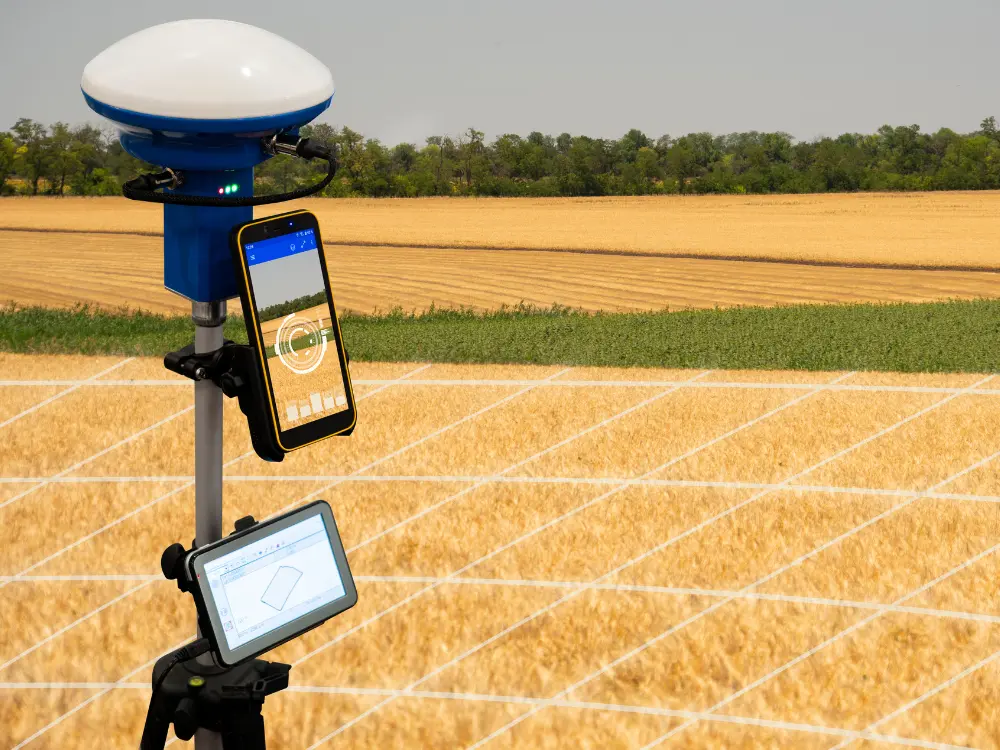In the world of agriculture, the term “precision agriculture” has become a buzzword, and for good reason. As the global population continues to rise, the demand for food is increasing, putting immense pressure on farmers to produce more with less. Precision agriculture is an innovative approach that is helping farmers meet this challenge by optimizing the use of resources, improving crop yields, and promoting sustainable farming practices. But what exactly is precision agriculture, and why does it matter, especially in a country like India?
What is Precision Agriculture?
Precision agriculture, also known as precision farming, is a farming management concept that uses modern technology to ensure that crops and soil receive exactly what they need for optimal health and productivity. This approach involves collecting and analyzing data from various sources—such as GPS, sensors, drones, and satellite imagery—to make informed decisions about farming practices. The goal is to apply the right amount of inputs (like water, fertilizers, and pesticides) at the right time and place, minimizing waste and maximizing efficiency.
In simple terms, precision agriculture is about farming smarter, not harder. Instead of treating an entire field uniformly, this approach recognizes that different parts of a field may have different needs. By tailoring farming practices to these specific needs, precision agriculture helps farmers use resources more efficiently, reduce costs, and increase yields.
Key Components of Precision Agriculture
1. Soil and Crop Monitoring
One of the core aspects of precision agriculture is the ability to monitor soil and crop conditions in real-time. This is achieved through the use of sensors that measure various parameters such as soil moisture, nutrient levels, and crop health. For example, soil moisture sensors can detect when a particular area of a field is too dry, allowing the farmer to apply water only where it is needed. Similarly, crop health sensors can identify early signs of stress due to pests or nutrient deficiencies, enabling timely interventions.
Example in India: In Punjab, precision agriculture is being used to monitor the health of wheat crops. Sensors placed in the fields provide real-time data on soil moisture and nutrient levels, allowing farmers to optimize irrigation and fertilization, leading to better yields.
2. Variable Rate Technology (VRT)
Variable Rate Technology (VRT) is a key component of precision agriculture that allows farmers to apply inputs like fertilizers and pesticides at varying rates across a field. Instead of applying a uniform rate across the entire field, VRT enables the precise application of inputs based on the specific needs of different areas.
This technology uses data from soil and crop sensors, along with GPS mapping, to determine the optimal rate of application for each part of the field. By applying the right amount of inputs where they are needed most, VRT reduces waste, lowers input costs, and minimizes the environmental impact of farming.
Example in India: In Maharashtra, sugarcane farmers are using VRT to apply fertilizers more efficiently, reducing costs and improving the quality of their crops.
3. GPS and Satellite Imagery
GPS and satellite imagery are essential tools in precision agriculture. GPS technology allows for accurate mapping of fields, while satellite imagery provides detailed information about crop growth and field conditions. Together, these tools enable farmers to create precise maps of their fields, identifying areas that may need more or less attention.
For example, satellite imagery can reveal variations in crop health across a field, indicating areas that may be suffering from nutrient deficiencies or water stress. Farmers can then use this information to adjust their farming practices, such as applying more fertilizers or increasing irrigation in specific areas.
Example in India: In Tamil Nadu, rice farmers are using GPS and satellite imagery to monitor crop growth and plan their farming activities more efficiently, resulting in higher yields and better resource management.
4. Drones and Aerial Imaging
Drones are becoming increasingly popular in precision agriculture for their ability to capture high-resolution aerial images of fields. These images provide valuable insights into crop health, soil conditions, and the effectiveness of irrigation and fertilization practices.
Drones equipped with multispectral and thermal cameras can detect issues that may not be visible from the ground, such as pest infestations or uneven crop growth. This allows farmers to address problems quickly and accurately, reducing the risk of crop loss and improving overall productivity.
Example in India: In Andhra Pradesh, drones are being used to monitor paddy fields, helping farmers detect early signs of pest infestations and adjust their pest control strategies accordingly.
5. Data Analytics and Decision Support Systems
Data analytics is at the heart of precision agriculture. The vast amounts of data collected from sensors, drones, GPS, and satellite imagery are processed and analyzed to provide actionable insights. Decision support systems (DSS) use this data to offer recommendations on the best farming practices, such as when to plant, irrigate, or harvest.
These systems can also predict outcomes based on different scenarios, helping farmers make more informed decisions. By using data-driven insights, farmers can optimize their farming practices, reduce risks, and improve their yields.
Example in India: In Karnataka, farmers are using data analytics platforms that integrate weather forecasts, soil data, and crop models to make better decisions about when to sow seeds and apply fertilizers, leading to more successful harvests.
Why Precision Agriculture Matters
1. Resource Efficiency
In a country like India, where water and land resources are often limited, precision agriculture offers a way to use these resources more efficiently. By applying inputs only where they are needed, farmers can reduce waste, save costs, and conserve resources, making agriculture more sustainable in the long run.
2. Increased Productivity
Precision agriculture helps farmers increase their productivity by ensuring that crops receive the optimal amount of inputs at the right time. This results in healthier crops, higher yields, and better-quality produce, which can translate into higher incomes for farmers.
3. Environmental Sustainability
By reducing the overuse of fertilizers, pesticides, and water, precision agriculture minimizes the environmental impact of farming. This not only helps protect the environment but also promotes the long-term health of the soil, ensuring that it remains fertile and productive for future generations.
4. Adaptation to Climate Change
Precision agriculture provides farmers with the tools they need to adapt to the challenges of climate change. By using real-time data and predictive models, farmers can respond more effectively to changing weather patterns, reducing the risks associated with extreme weather events.
Challenges and the Way Forward
While precision agriculture offers many benefits, its adoption in India is still in its early stages. The cost of technology, lack of awareness, and limited access to digital infrastructure are some of the challenges that need to be addressed. However, with government support, increased investment in technology, and greater awareness among farmers, precision agriculture has the potential to transform Indian farming.
Conclusion
Precision agriculture is more than just a technological innovation; it is a new way of thinking about farming. By using data and technology to make farming more precise, efficient, and sustainable, precision agriculture is helping farmers meet the challenges of the 21st century. As more farmers in India adopt this approach, it will play a crucial role in ensuring food security, protecting the environment, and improving the livelihoods of millions of people who depend on agriculture.

